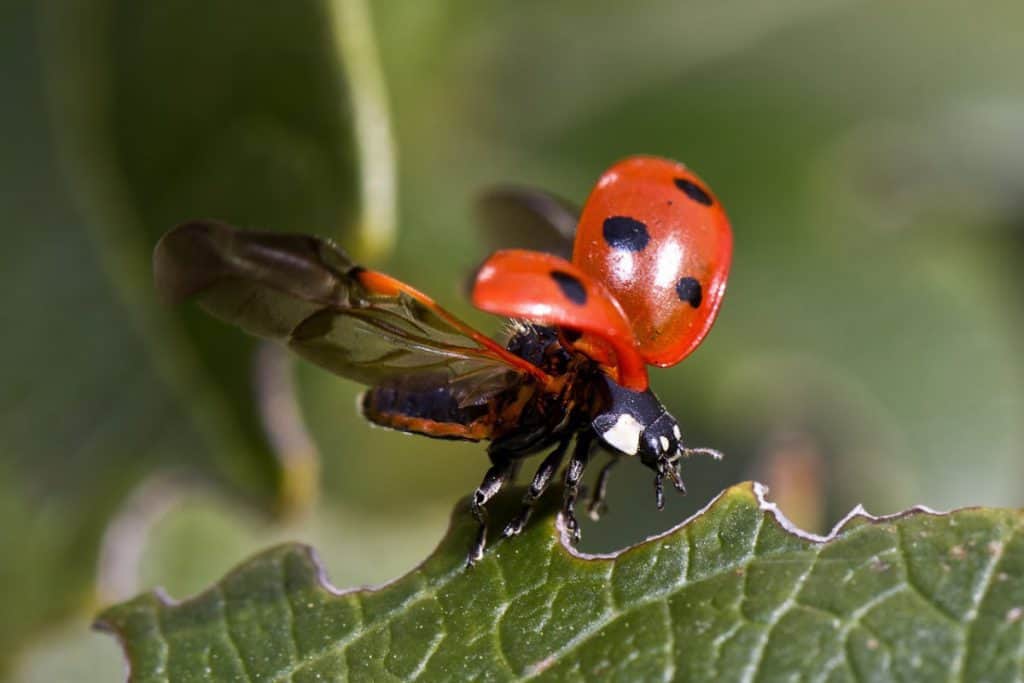
If you enjoy reading this article, why not check out our articles on Do Ladybugs Build Nests? and What Do Ladybugs Eat? Let’s Find Out!
“Ladybug, ladybug fly away home…”
This is the opening line of one of the nursery rhymes that mentioned ladybugs. I am not sure if all of you are familiar with this but the fact that this insect has a nursery rhyme means that they have been popular for a very long time.
The name “ladybug” has caused somewhat of confusion as to if these insects are born all female. We will talk more about this mystery in further detail in this article.
Are all ladybugs female?
The answer is no. Contrary to what many believed, the name ladybug refers to both the male and female gender of this insect. The name “ladybug” was derived from a very spiritual history that is connected to the Virgin Mary.
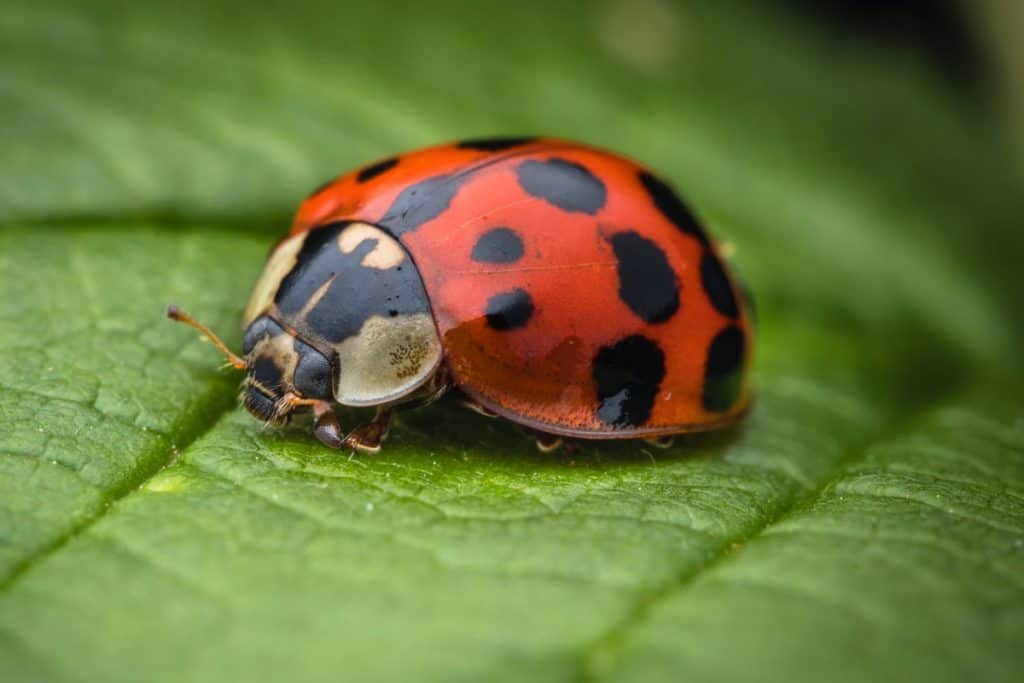
Many will begin to wonder how did the ladybug come by its name. The story behind the name and how it is connected to the Virgin Mary will be briefly tackled further in this article. From there, you’ll gleam that the name of this beetle does not state that these beautiful creatures are all girls.
The History Behind The Name
You might have heard ladybugs being called lady beetle, ladybird, and lady fly. It is important to remind you that ladybugs are insects; they are a member of the beetle family. It is where the name lady beetle came from. As for the ladybird name, it came from the original name ladybugs have in England, which is “our lady’s bird”.
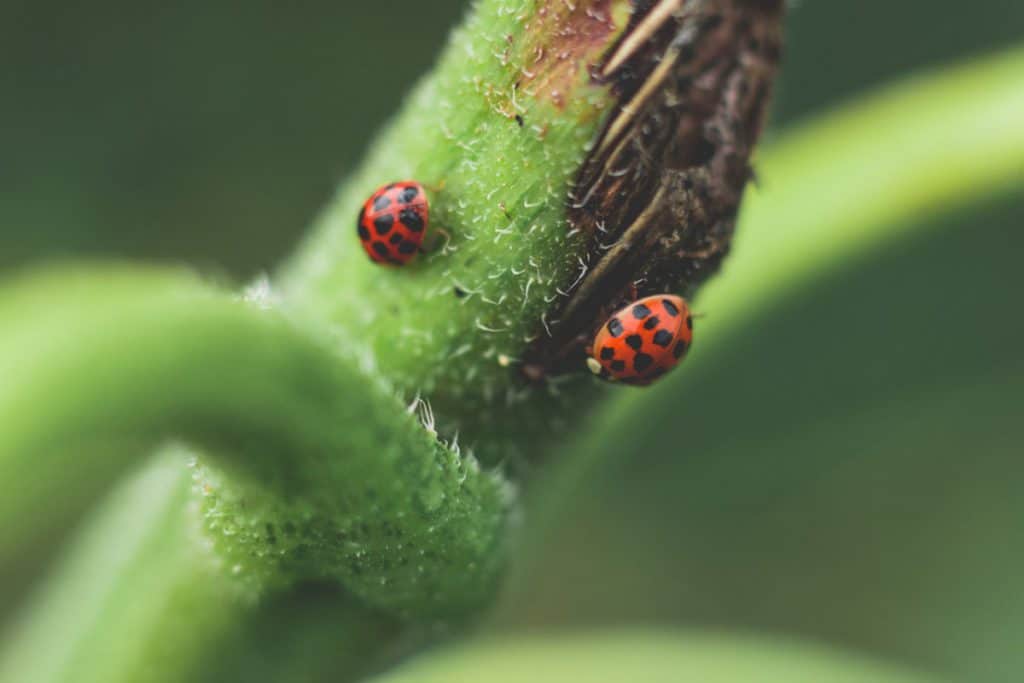
What is special about ladybugs?
From the England name the ladybugs have, my research has led me to information connecting it to the Virgin Mary. The most notable of all the species of the ladybugs is the “seven spotted ladybug”. It is believed that these beetles were sent by the Virgin Mary to help farmers battle pests. According to the folklore, farmers prayed to the Virgin Mary for help when pests were invading crops, and shortly after, the seven spotted ladybugs appeared. As you may all know, ladybugs are an effective natural crop pests controller.
What is the spiritual importance of a ladybug?
The seven spots found on the ladybug also contributed to the belief that the Virgin Mary sent them. The farmers connected these spots to the seven sorrows that the Virgin Mary went through during her life. These seven sorrows are:
- The prophecy of Simeon
- The flight to Egypt
- The loss of child Jesus for three days, who is later found in the house of His Father.
- The sorrow of seeing Jesus carry his cross.
- The Crucifixion of her only Son, Jesus Christ.
- The sorrow of watching her Son die and be taken down from the cross.
- The burial of Jesus Christ, her only Son.
In addition to the seven spots, the vibrant red color of their elytra (the hard outer wings that hide the flying wings of the ladybugs) is also believed to be symbolic of the Virgin Mary, who is also depicted wearing a red cloak.
There are several more religious connections for this beautiful creature. The ones I discussed are just a few. I just wanted you to have an idea as to where the name ladybird came from and why it is not a good reference to indicate the gender of the ladybugs.
For more information on the distinction between male and female ladybugs, as well as more on the history behind ladybugs, read What Are Boy/Male Ladybugs Called?
Telling The Difference Between A Boy and A Girl Ladybug
Unless you look at a ladybug under a microscope, it will be challenging for you to determine if it is a boy or a girl. However, if you catch a ladybug during mating, there are a few key differences you will notice between the male and the female.
Experts said that other than for breeding purposes, there is no other important reason behind knowing the gender of the ladybugs. They are supposed to live 1 to 2 years, maybe three if the conditions are favorable. So, it is best to leave identifying the gender to the experts because of their short lifespan.
General Appearance Of Both Male and Female Ladybugs
Both male and female genders of this beetle have the renowned distinctive coloring depending on the type of species you are looking at. It is the reason why it is so tough to identify the male from the female with the naked eye. However, upon closer inspection and during mating season, you will be able to determine the male from the female. (More about this in the next section of this article)
- Numbers of spots:
All ladybugs have six black legs and possess a vibrant outer shell or outer wing (elytra) that hides the actual flying wings of this creature. Most ladybug species have either yellow, orange or vibrant red elytra with black spots. The number of spots depends on the species of the ladybug. It was once believed that the number of spots on the ladybugs tells how old it is, but experts have busted this myth.
Ladybug spots are super interesting! If you’re still skeptical about ladybug spots telling their age, you may want to check out Do Ladybug Spots Tell Their Age?
- Size of ladybugs:
Ladybugs ranges from 1mm to 10mm (0.04 inches to 0.4 inches) depending on the type of species. Both males and females have antennas and a blackhead.
The appearance of both male and female ladybugs are so similar to each other that the only way to accurately determine the gender is through the use of a microscope and the help of an expert entomologist.
How To Tell The Gender Of The Ladybug
It really is difficult to determine if a ladybug is a boy or a girl, but there are instances when you can quickly identify the two from each other. The slight differences between male and female ladybugs can be spotted if they are side by side.
- The first one would be the size. Female ladybugs are slightly larger than the male.
- The second is, during mating, the one who is clinging to another ladybug is the male.
- Furthermore, male ladybugs have slightly longer antennas than females.
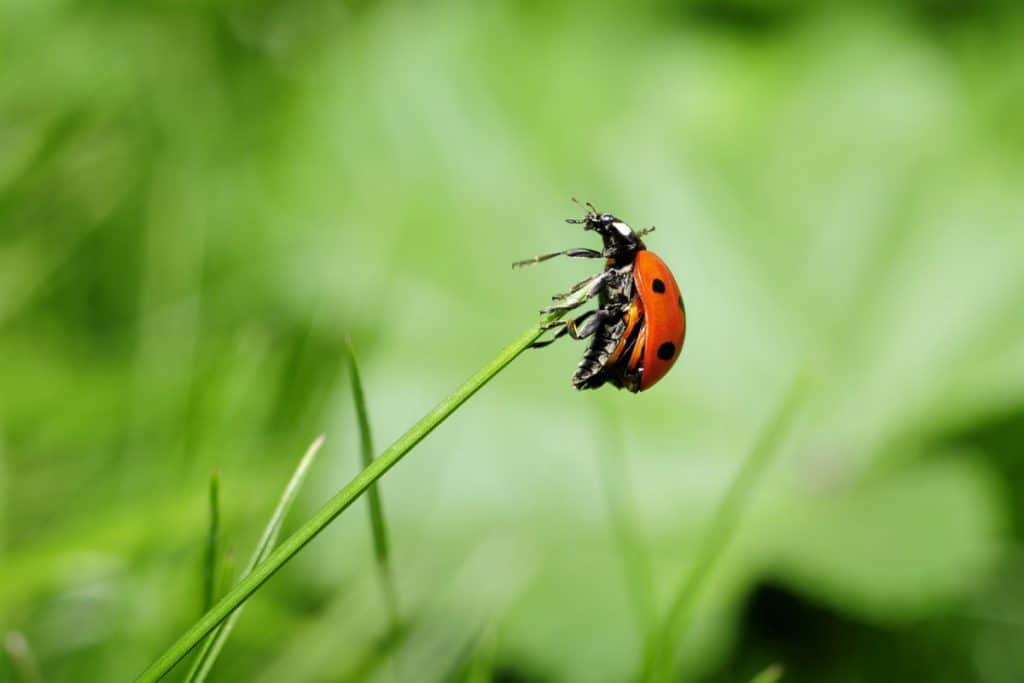
According to experts who have looked at the ladybugs under the microscope, some of the differences they most notably see is that males tend to have more hair on their underside than females, and females have smoother abdomen than males. There are also some color variation on the labrums (a lip looking external structure in front) and prosternum (a collar looking outer structure beneath the head). Females usually have darker shading on these specific parts than males.
Who Has More Spots, Male, or Female Ladybugs?
Before I answer this question, it is best to understand why ladybugs have spots in the first place. Experts who have been studying ladybugs extensively have determined that the spots, including the vibrant color they possess, is a way for these creatures to warn predators that they are an unappealing food.
Let’s take a different animal as an example. Most frogs are either dark brown or green. There are, however, a few species that have bright red markings or bright green skins, and these frog species do not hide from predators like their darker colored cousins. They are equipped with toxins on their skin that makes them poisonous to their would-be predators.
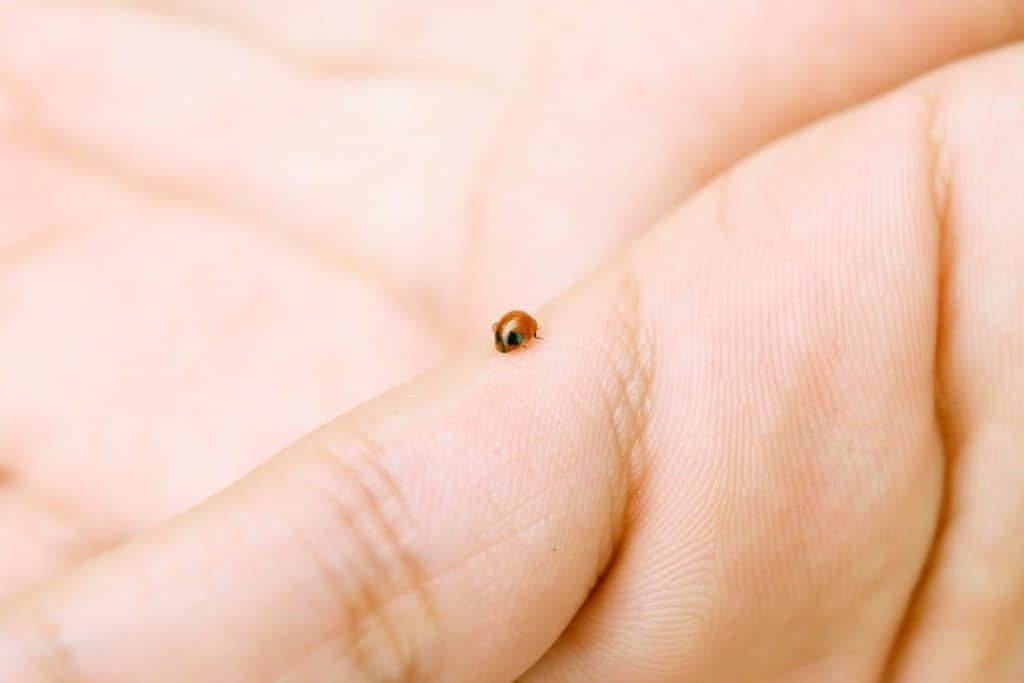
It is believed that nature has its way of labeling the dangerous species by giving them vibrant and bright markings or colors. Entomologists believe that the same theory applies to our dear ladybugs. They may be cute and adorable to look at, but they are still considered as predators. Their bright orange or red color (including their spots) helps ward away their natural predators, such as birds, frogs, and other animals.
As to who has more spots, gender seems to have no bearing at all. Both male and female ladybugs possess the same number of spots depending on the species. Even those who have worked with ladybugs fora long time agree that there is no difference in the number of spots on the ladybug between genders. That is probably the reason why my research never mentioned the number of spots as an indicator of the gender of these adorable beetle.
Conclusion
Here is a quick summary of the whole article. I know most of you will probably skip ahead to this part. So let me make this as short and sweet as possible. The name ladybug encompasses both the male and female gender of this critter. All scholarly articles or research papers, both online or offline, has mentioned and stressed this fact. The name has a long history, but the main one that really influenced the old folks is the one involving the Virgin Mary, who is also known as Our Lady.
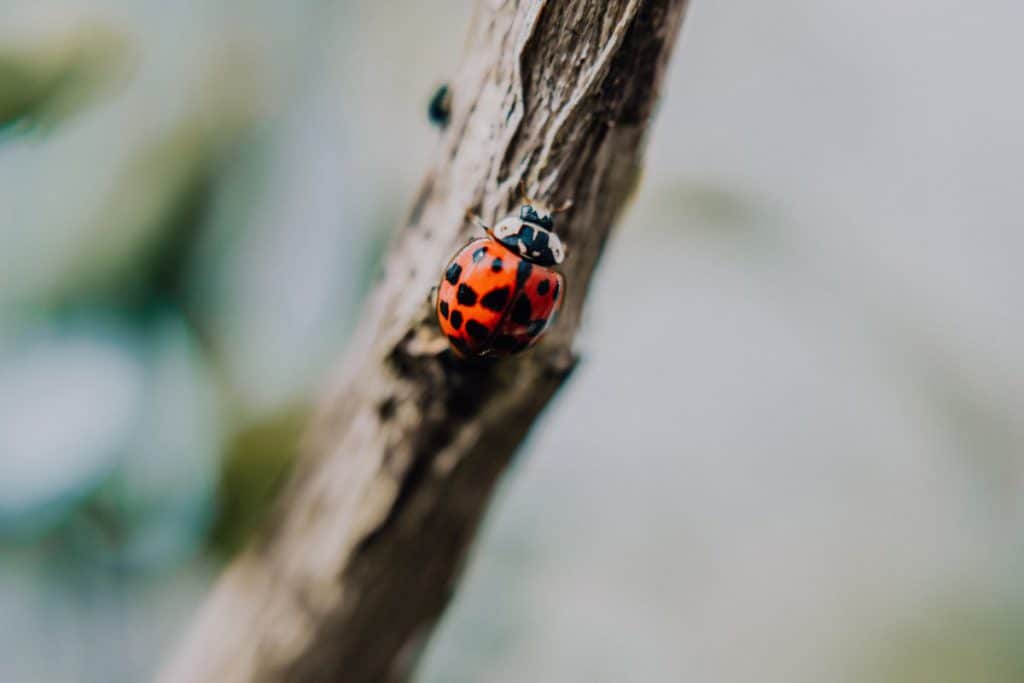
Determining which is the boy and the girl is another whole story altogether. It is very hard to pinpoint the male from the female unless you catch them during mating or if you see two of them side by side. There are several discernible differences between the male and the female if ever you are lucky enough to have a chance to spot them during the previously mentioned instances. Size is one of them; another is the length of the antennae and also the position of the ladybug during mating.
But upon closer inspection (under a microscope), the differences are more prominent. Males tend to have more hair, and females have smooth abdomens. The number of spots on a ladybug is not an indicator of gender, so don’t be fooled. It does not also tell how old a ladybug is. Most ladybugs live 1 to 2 years, maybe 3 if conditions are favorable. Both male and female genders possess the same number of spots depending on the type of species you are looking at. Keep in mind that ladybugs are beneficial creatures in our garden; they are, after all, called a gardener’s best friend. I hope you find this article informative and fun to read.
If you enjoyed reading this article, why not check out our articles on What Are the Biggest Bugs in America? and How Deadly Are Scorpions? The Answer May Surprise You!
Recent Posts
Tiny Black Bugs in Bathroom NO WINGS: What They Are and What to Do!
Finding tiny black bugs in your bathroom can be uncomfortable, to say the least. Especially if they are persistent, or they appear in very large numbers, which they often like to do. When it...
Tiny Black Bugs in Plant Soil - What Are They & What To Do About It
A short horror story: You get a new houseplant. You do your best to take care of it. You’ve ensured that it has the right soil, the right amount of sun, it gets enough water. And then one day, you...

